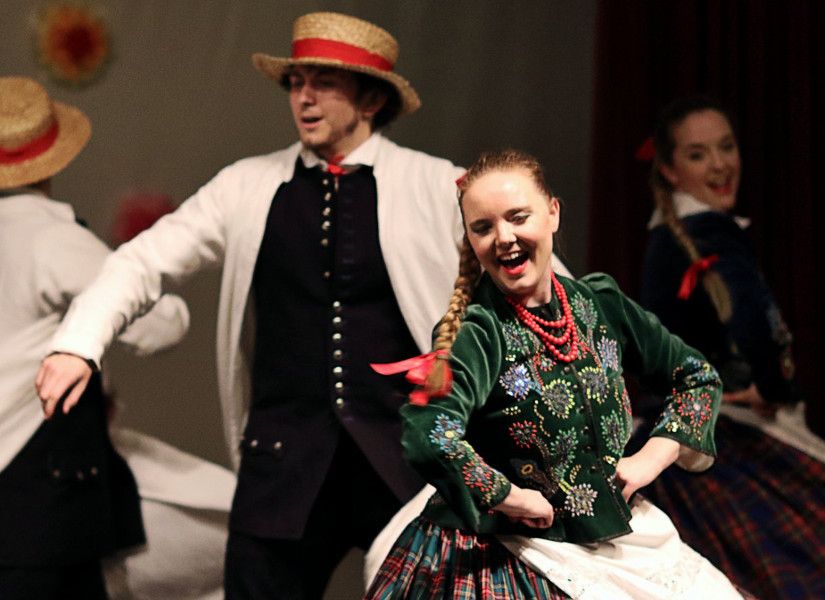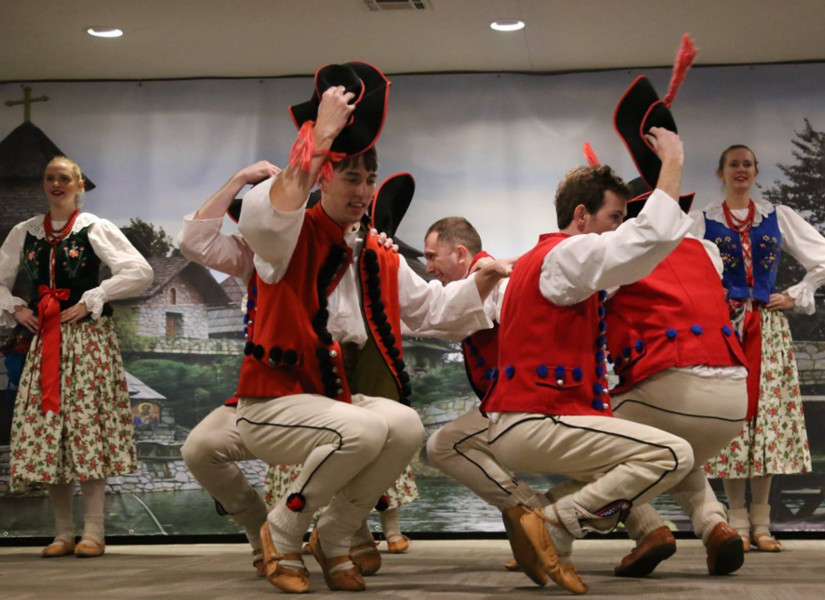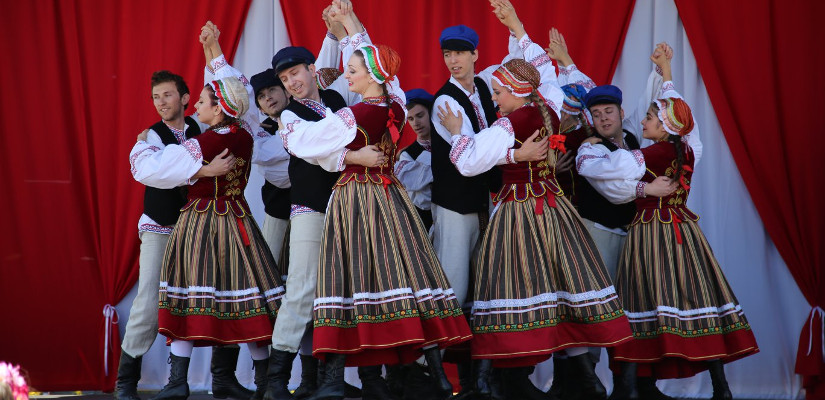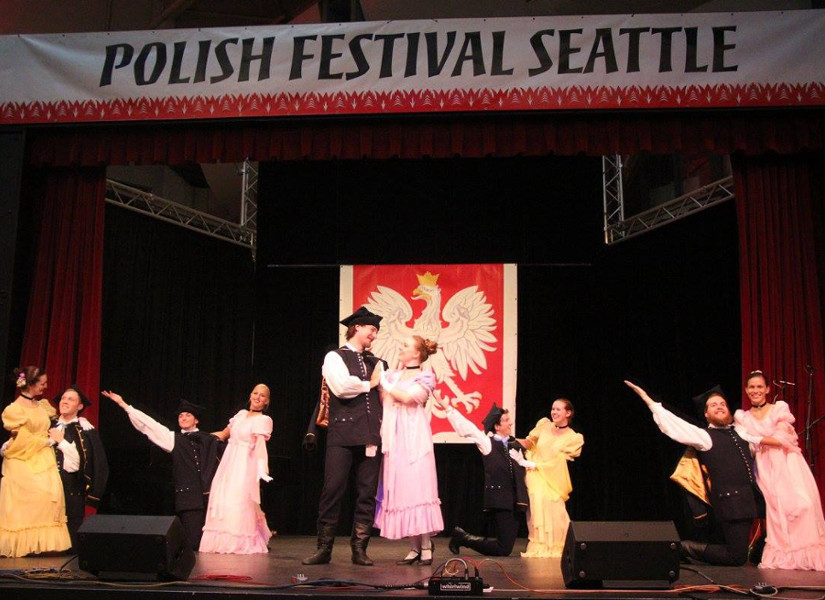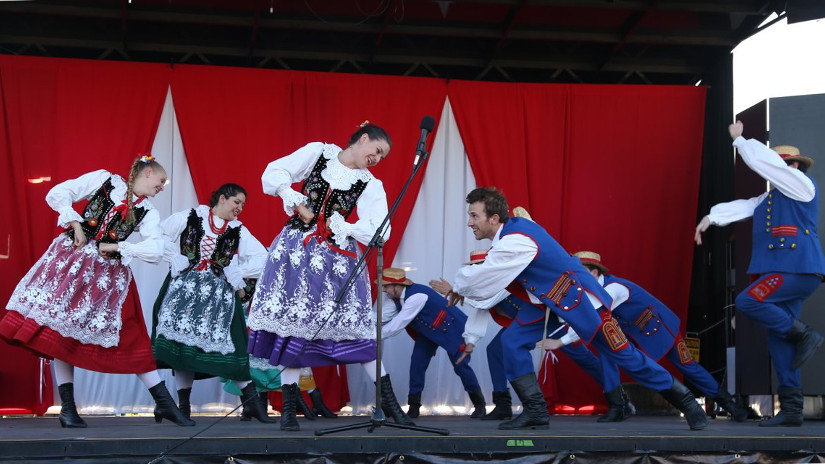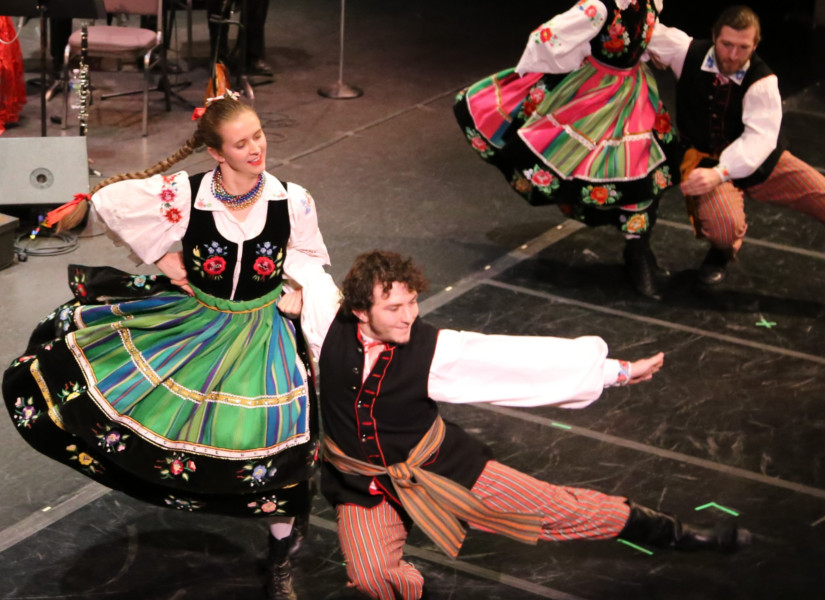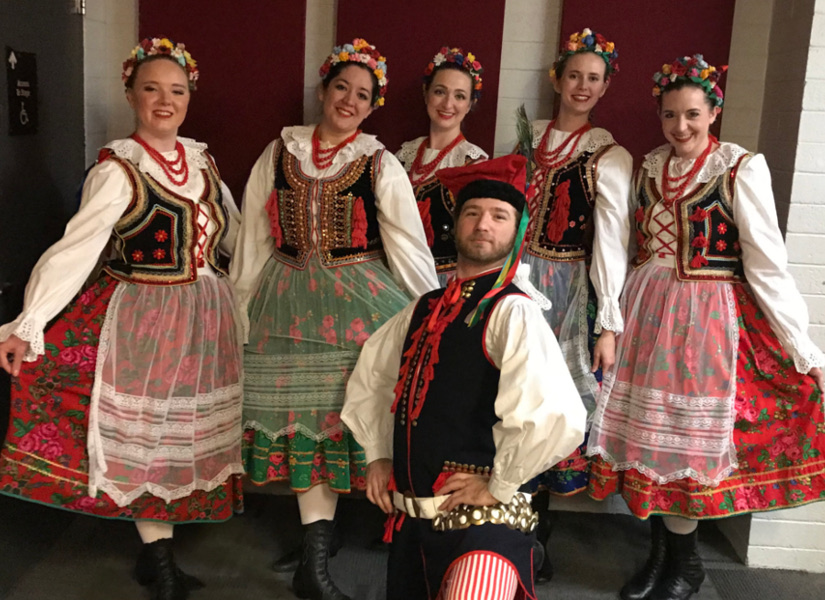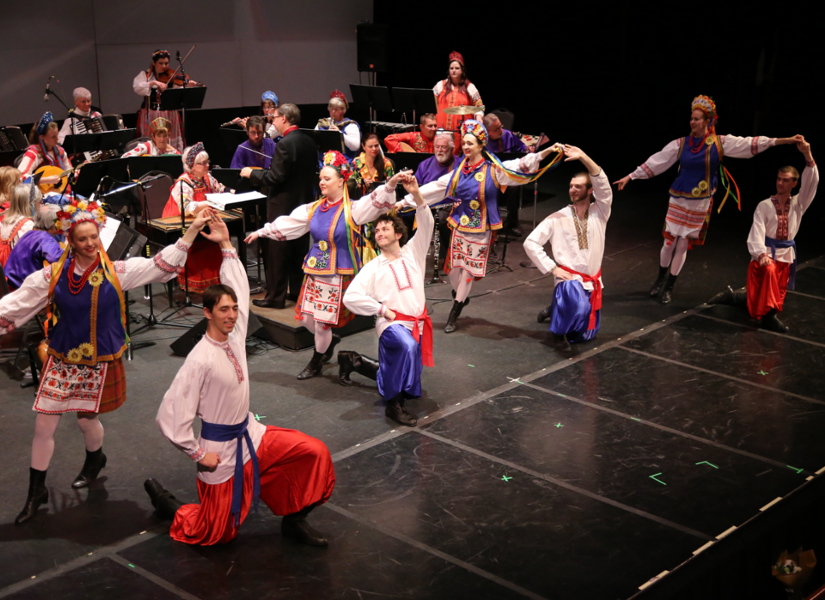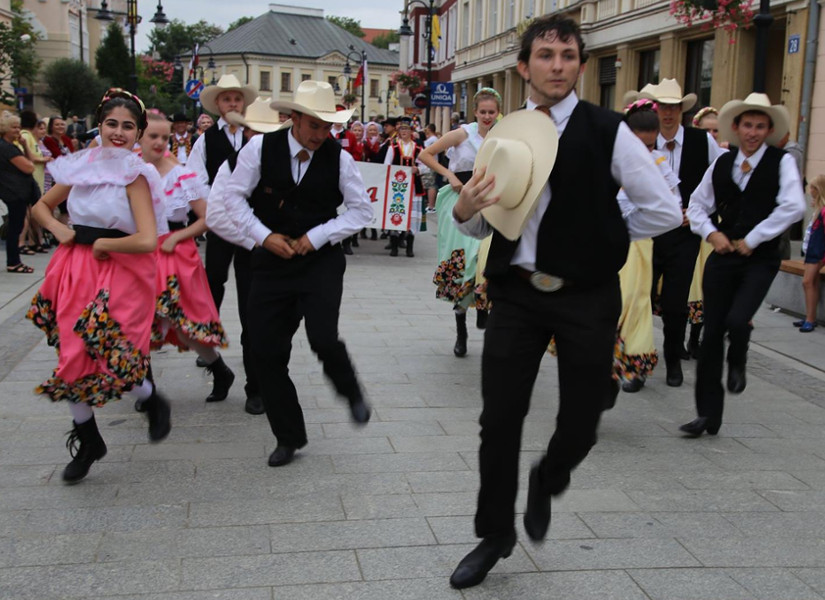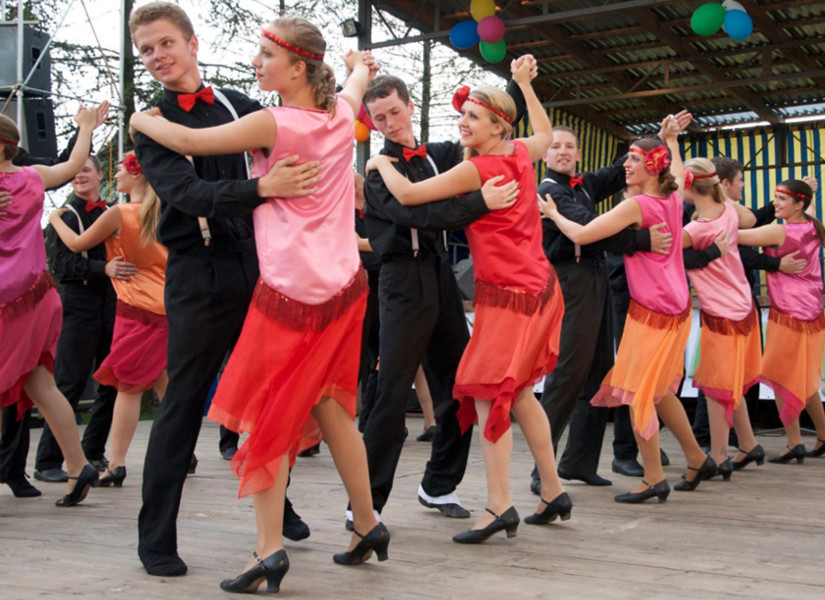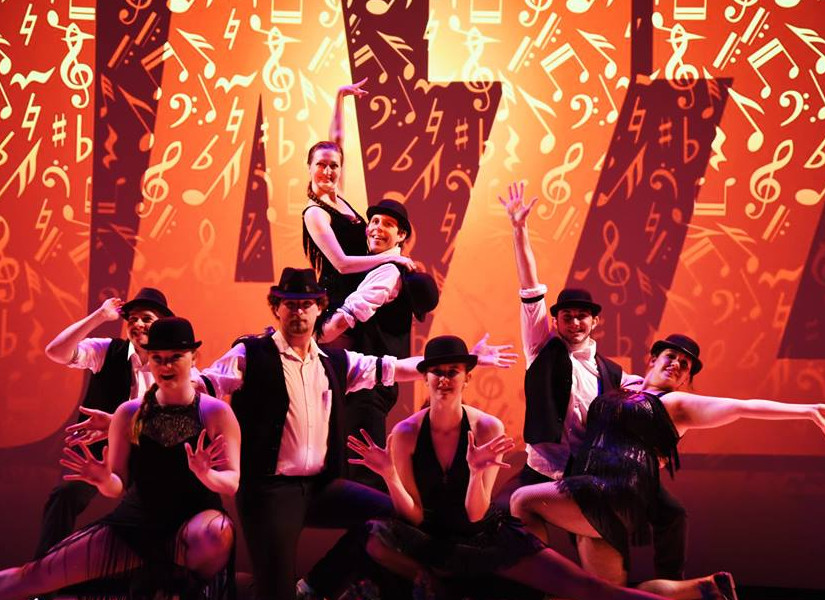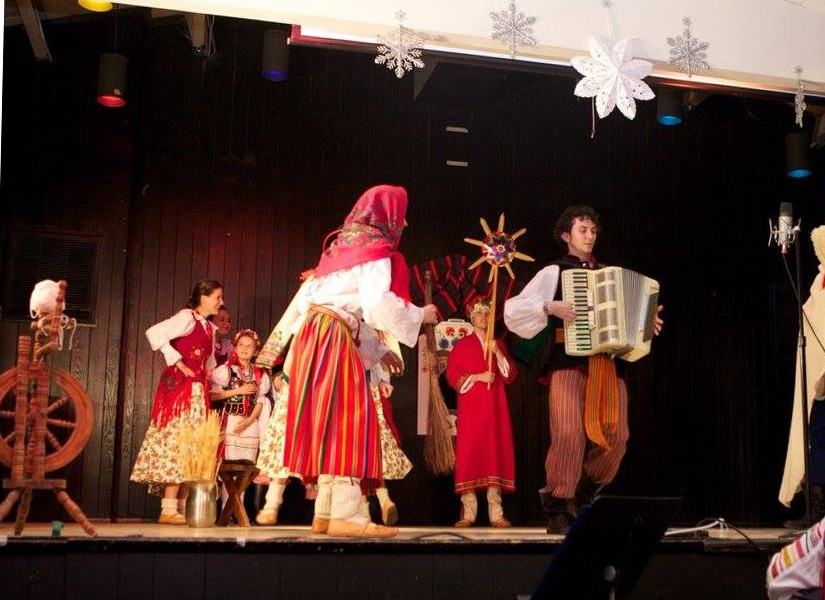Przeworsk Suite
Our Przeworsk suite includes dances from the southeastern region of Poland. Crisscrossed by trade routes and shifting borders, this region is noted for its diversity of dances, five of which we will perform today. First is the polka Przeworska, often called the wsciekła or wild polka for its tight spins and slowly increasing tempo. Next is the Bandoska; a name derived from a Polish word for a migrant worker. Third is the Gacok, named for the region around the village Gac. The Żyd, or Jewish person, is a dance invented after watching Jewish communities dance, and finally is the Zmieniana, which comes from the word zmieniac or to change because partners change places in mid-dance.
Polka Warszawska
The Polka Warszawska, or Old Warsaw Polka, is set in post World War I Warsaw and tells the story of farm boys who have come from the country side to the big city to have fun and dance with the local women. Being working class people, they poke fun at high society, dancing exaggerated parodies of the Tango and Waltz alongside their native Polkas.
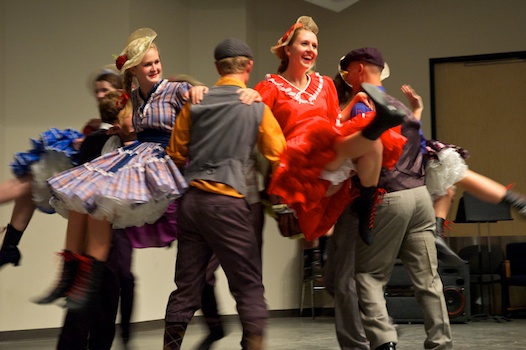
Żywiec Suite
These popular dances come from mountain range, Beskid Żywiecki. These distinctive dances are characterized by light footwork throughout as well as athletic stunts as the men attempt to outperform each other. Lajkonik’s costumes were made in Zywiec villages by local folk artists. Very characteristic for zywiec regions are intricately decorated leather shoes and belts.
Podlasie Suite
Originating in Eastern Poland, these dances often have a Ukrainian influence in their music and style. Characterized by a variety of polkas, Białe Podlasie features a folk songs about life and love.
Spisz Suite
The Spisz region borders the Carpathian Mountains in the Tatry Range, just north of Slovakia, near the town of Niedzica. The culture here is affected by its proximity to Hungary and the dances show this influence.
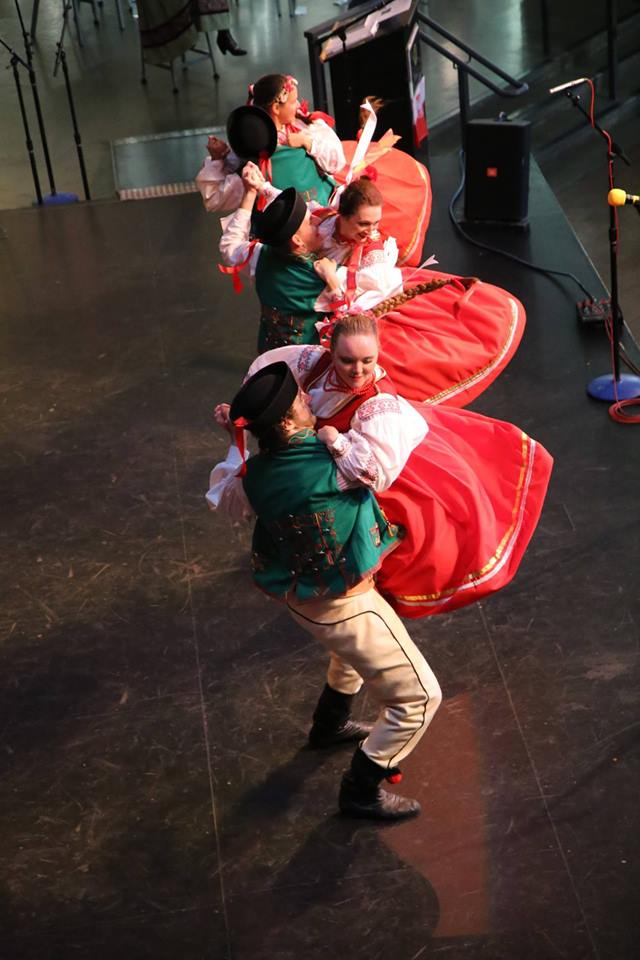
Cieszyn Suite
Our suite of dances from the Cieszyn region reflect the diversity of the region. On the southwestern border of Poland, historically Cieszyn traded with Hungary, Germany, and other parts of Poland and eastern Europe. The first dance, the Cieszyniok, is a version of the traditional Polonez, but specific to Cieszyn. The next dance, the Polka Mazurka, combines the polka step with its bounce with the traditional Mazur step forming an interesting hybrid. Polka Szpacyr, the third dance, is a combination of walking polkas and flashy tricks by the men. Finaly, Szot Madziar comes from imitating Hungarian dances and military styles. Costumes for this dance were made by local artisans with lifetimes of experience in traditional garbs in Poland.
Polonez and Mazur Suite
Our Mazur and Polonez represent how the nobility would have danced these two national dances. The Polonez is traditionally a parade dance, danced with dignity and poise, it was traditionally a way for the nobility to socialize and greet each other. Once done, the real dancing, the quick and graceful Mazur was danced. The Mazur is one of the most dramatic dances in Polish folk culture, characterized by a fast but smooth running step and sharp accent movements.
Rzeszów Suite
Dances, mostly polkas, from this southeastern part of Poland are very lively and dynamic and carry many humorous lyrics. The songs are teasing and quick, and the dancing energetic, spinning and sometimes tongue in cheek. These beautiful costumes include beautifully beaded vests, colorful skirts and represent the region’s Sunday best.
Kujawiak - Oberek Suite
Two of Poland’s national dances, the Kujawiak and Oberek, are two sides of the same coin and often performed together. The slower of the two, Kujawiak is often called the “Lovers’ Dance”, and is known for its’ grace and beauty. The faster, the Oberek, embodies the energy that contrasts the Kujawiak, involving dazzling tricks and fast spins. Danced in our gorgeous costumes from Lowicz, the Kujawiak-Oberek is a showstopper.
Krakowiak
The Krakowiak is a fast, syncopated Polish folk dance in duple time from the region of Kraków and Lesser Poland. The folk outfit worn for the dance has become the national costume of Poland, most notably, the rogatywka peaked hat with peacock feathers.
Mazovia Suite
The Mazovia suite incorporates a variety of dances from different regions in central Poland. Lajkonik performs dances from the Kurpie, Opoczno, Lowicz, and Kujawy regions, culminating in a lively Oberek, an energetic dance full of tricks, lifts, and quick spins common to all of these regions. The suite also includes a beautiful wedding tradition from Lowicz called Oczepiny, where the bride’s wedding headdress is replaced with the headscarf of a married woman. The Mazovia suite shows off the variety and commonalities of folkdances in central Poland.
Ukrainian Hopak
Hopak is often popularly referred to as the "National Dance of Ukraine", it is a Ukrainian folk dance originating as a male dance among the Zaporozhian Cossacks but later danced by couples, male soloists, and mixed groups of dancers.
Sonora Bronco
Charleston
The Charleston is a dance named for the harbor city of Charleston, South Carolina. The rhythm was popularized in mainstream dance music in the United States by a 1923 tune called "The Charleston" by composer/pianist James P. Johnson. The peak year for the Charleston as a dance by the public was mid-1926 to 1927.
Lindy Hop
Fosse Jazz
Kids Group
Kids
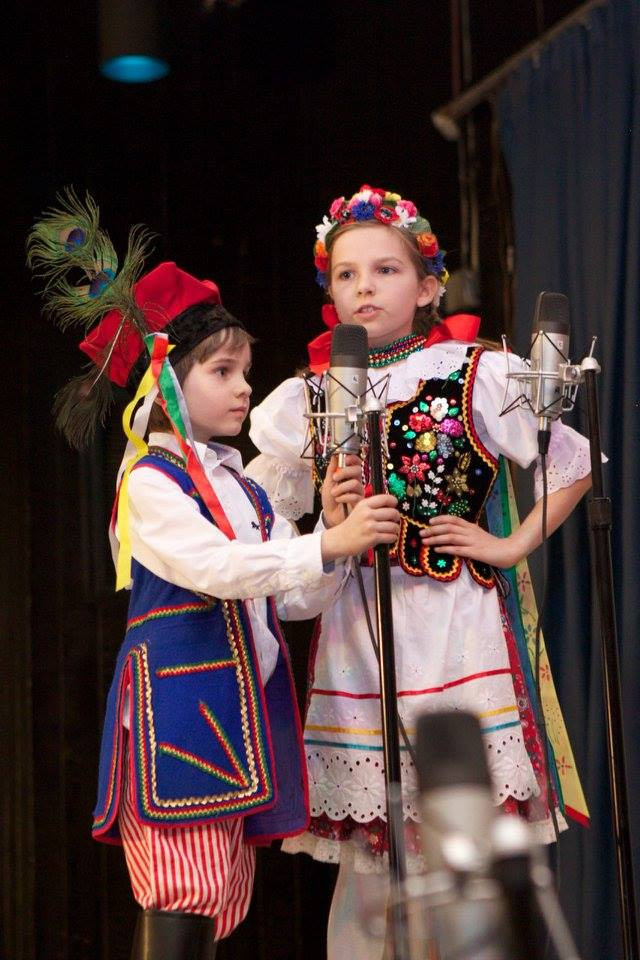
Polish Christmas
One of the aspects of Polish Christmas include nativity plays called "Jasełka". Usually plays recounts the story of the Nativity of Jesus, in some regions it may contain comedy skits and local humour.
